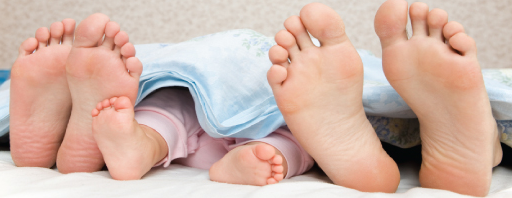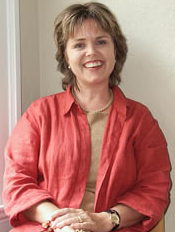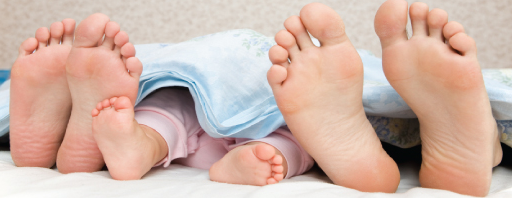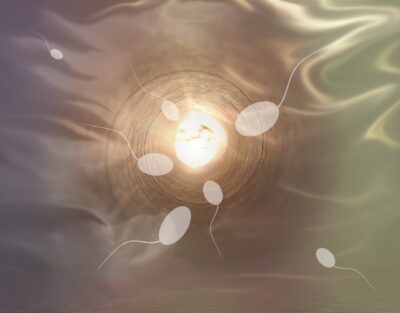
 Randine Lewis, Ph.D., Lic.Ac.
Randine Lewis, Ph.D., Lic.Ac.
Complete resolution of severe, long-term tubal obstruction with massage, acupuncture and herbal therapy is rarely possible with alternative techniques. Often an improvement is made, but resolution is not possible. Then In-Vitro Fertilization is the only option for these women who wish to give birth to their own genetic offspring.
Thankfully, acupuncture can help improve the outcome of assisted reproductive techniques. First, Chinese medicine can help alleviate the side-effects of medical treatments, improving the response to hormonal stimulation. Secondly, acupuncture can help improve the blood flow to the uterus and ovaries, which has been found to be a great determinant in the success of assisted reproductive techniques. Finally, natural techniques can be employed to help alleviate some of the tension which is inherent in these extremely stressful procedures. It has been well documented that stress negatively effects the outcome of ART. A recent study published by the American Society of Reproductive Medicine’s Fertility and Sterility Journal, reported that stress impairs the success rate in IVF cycles up to 93%!
One aspect which needs to be stressed, however, is that you need to be hormonally healthy before you go into the cycle. Your best response to any assisted reproductive technique will depend upon your overall endocrine status the few months preceding the procedure. Getting pregnant isn’t the goal. Giving birth is. Miscarriage rates are much higher for pregnancies that result from hormonal stimulation. You have within your means methods by which you can improve the quality of response, rather than the number of eggs produced per cycle. Women with fallopian tube obstruction statistically have much higher odds of giving birth than those with “unexplained infertility” or ovulatory disorders, which account for 25 – 40% of those who seek reproductive assistance. That is because they don’t have hormonal imbalances which affect the quality of their embryos. As well, conceptions which result from fathers with sperm issues (low count, morphology or motility), have higher rates of miscarriage. You must do everything within your means to ensure you are as hormonally healthy as possible before you attempt medical reproductive assistance!
Techniques to Improve Assisted Reproductive Procedures

Everybody who has been through a cycle of hormonal stimulation knows how difficult this process can be. Numerous visits to the clinic, daily injections, suffering through the side effects, hoping for a good response to the medication, anticipating a smooth insemination, praying implantation is successful, and the dreaded waiting for a positive or negative blood test… the stress is beyond explanation. Most every aspect is out of your control. Measures can be taken, however, to empower you in this process and help you feel like you are truly in charge.
You are in control of your response. This does not have to be the stressful process it seems. The first step in gaining control is to remain calm. Keep the stress hormones out of the equation entirely.
- Do not smoke, use nicotine patches or chew nicotine gum.
- Do not drink any alcohol.
- Do not drink any coffee.
- Eat well, according to your pattern discrimination dietary guidelines.
- Exercise daily before an IVF transfer, but do not perform jarring, high impact or heavy weight lifting exercises which make you grunt and raise the internal abdominal pressure gradient. Rest after transfer. Do not strain with a bowel movement; if you are prone to constipation, increase dietary fiber or take a mild stool softener (not a cathartic/laxative.)
Although most clinics do not have you limit your activities after an IVF procedure, assisted reproductive techniques are artificial. Putting an embryo, which has been developing in an artificial laboratory environment, into the uterus changes its environment. The environment in which the embryo will hopefully find its home for the next nine months, needs to be free of stress, tension and the resulting toxic response. Pregnancies that occur as a result of hormonal stimulation are statistically more likely to end in miscarriage. It is especially important to remain as healthy as possible when you are the recipient of these techniques.
Patients who receive the unfortunate diagnosis of “poor responder”, meaning they fail to respond to the hormonal medication used during their IVF protocol, are usually pooled into the category of women whose only hope is to undergo donor egg IVF transfers. Some more progressive reproductive endocrinologists have found means to enhance the response to hormonal medication. Improving uterine and ovarian blood flow is one method that dramatically improves response. A study in Human Reproduction, vol. 14 no. 7, 1999, reported that supplementing with 16 g. daily or oral L-arginine supplementation from day 1 of the menstrual cycle until the dominant follicle reached over 17 mm. in diameter improved the response. The study concluded that, “oral L-arginine supplementation in poor responder patients may improve ovarian response, endometrial receptivity and pregnancy rate.” Another study in the European journal of Human Reproduction, vol. 15 no. 10, 2000, reported that supplementing “poor responder” patients with 80 mg./day of oral dehydroepiandrosterone (DHEA) for two months prior to stimulation increased the insulin-like growth factor effect about 150% (like growth hormone supplementation does), augmented the gonadotrophin effect and improved response to ovarian stimulation.
Before and during hormonal stimulation, perform the exercises which directly increase blood flow to the pelvic organs:
Femoral Massage – This exercises increases the blood flow to the pelvic organs, providing more nourishment to the uterus and ovaries. Compress (or have your partner compress) the large artery just beneath the crease in your groin between your thigh and lower abdomen. This is the femoral artery, which comes from the iliac artery. The iliac artery gives off branches which supply blood flow to the uterus, fallopian tubes and ovary. (The ovary has an additional blood supply which branches off the same arterial section that supplies the kidneys.) When the flow has ceased and you feel the pulsation end at your finger tips, hold for 30-45 seconds. The blood is now backing up and increasing the pressure gradient in the iliac arteries and forcing more blood into the pelvic arteries, flooding the pelvic organs with more blood. As more blood feeds the ovaries, more hormonal stimulation will reach them, improving their response. When the hold is released, you should feel a sensation of warmth rushing down your leg as the blood supply returns to the lower extremity. Perform the femoral massage three times, twice daily up until transfer only.
NOTE: Do not perform this exercise anymore after transfer. If you have high blood pressure, heart disease or circulatory problems including aneurisms, varicose veins, phlebitis, thrombosis, or a history of strokes or detached retinas, do not practice these techniques. If you have diabetes or similar disorder which affects the circulation, but can perform normal exercises and daily routines, practice on one side at a time and repeat on the opposite side. Perform the femoral massage three times on each side, twice daily if possible.
(insert figure 3) Qi Gong Breathing – This exercise utilizes the basic life force – the breath, for relaxation, and enhances the body’s focus on the reproductive organs. We literally breathe life into and through the uterus.
1) Breathe in very deeply, and concentrate on bringing your breath from your nose and down the midline of your body, between the breasts, down the abdomen, and eventually focusing your breath down to the region two inches below your navel. This is called the Dan Tien. Let the breath energy pool here.
2) At the end of inhalation, bring the focus from the area below your navel down through the uterus and to the perineal muscles. Now perform a kegel exercise, squeezing the perineal muscles as if you were attempting to stop the flow or urine. When you release the kegel, begin exhalation.
3) During exhalation, turn the focus of your attention from the tip of the coccyx and up the spine to the top of the head, then down the midline of the head and out the nose. Repeat steps 1, 2, and 3, until they become one smooth, continuous movement.
Foot Soak – This relaxing treatment improves the circulation to the lower half of the body, and warms the feet. All the meridians of the body that pass through the uterus go down to the feet. Soaking the feet in warm water for 10-20 minutes per day dilates these blood vessels, and increases the blood flow to the pelvic organs as well; not to mention the relaxing effect of a warm foot soak.
After transfer, stay in bed for a few days. Do not resume normal activities. Consider that most culture mediums in which an embryo is developing is of a different viscosity than the uterine fluid. When the embryo(s) are placed into the uterus, they will find their way out if the home is not receptive. Remain as calm and stationary as possible. Meditate. Breathe deeply. Listen to soothing music. Order out.
Meditation with Visualization

You may do as much of this exercise as you are ready. Read through all of it first, then practice each section, adding to it each time you perform the meditation until the meditation is complete. You may leave the meditation whenever it doesn’t feel comfortable, or join it again at any part of the visualization.
Lay down, on your back, with your eyes closed. Relax and breathe deeply. Notice any areas of tension you feel in your body from your head to your neck, down your arms and hands, through your torso, down your abdomen, buttocks, thighs, calves and feet. Tense the tight areas in your body even more, one by one. Breathe in, inhaling deeply down into your lower abdomen. Push your stomach out as you breathe in. Focus your attention on the tension in your body, then tighten the muscles in the area even more, and relax them fully as your exhale. Exhale all the way, deflating your abdomen when you breathe out. Breathe the tension in your body out through the breath.
Focus your attention on the tension, the breath, and the relaxation. Nothing more. When the tension in that particular part of your body is gone, move on to the next part. When you feel relaxed throughout your body, and your mind is clear, begin the visualization. Continue the deep breathing exercise, breathing deep into your abdomen and relaxing with each exhalation.
A river will be used as a metaphor for your life. A garden will represent the endocrinology lab if you are doing in-vitro fertilization. Modify these scenes for your own individual maximum comfort.
Picture your ideal river scene. Picture the banks of the shore, the background scene, the weather, and the water itself. Are the waters rough or calm? Continue to picture this river scene until the flow of the river feels comfortable and safe.
You are on a raft. Picture what you are wearing – is it white and flowing; is it primitive and beaded? It must feel comforing – this will be your maternal gown. Picture the raft as rustic or as luxurious as you wish. This is your raft, your vessel for this journey. Is it hard or soft? Is it made of pure and untreated materials? You may furnish it with pillows, comforters, or keep it bare and natural. Can you feel the waters of the river through the raft?
Let the raft float down the river. Relax and let the waters of life take you down the river. Trust your raft. Trust the water.
When you are ready, let your raft float down to a cove where the water takes you. Picture the cove with fertile banks. The soil on the banks are dark and rich. They receive water from the river of life. They receive ample sun and adequate shade. The banks of this cove will be your special garden. What else will nourish your garden? Who would you like to be there with you? Who is not allowed? You may wall off your garden, or keep it open to the surroundings. Your garden is safe.
Your seed will begin life here. You may remain on your raft, or come onto the banks to assist the process while your seed is receiving the gift of life. Watch where your seed is growing. Help picture the perfect soil. Nourish the soil. Water the soil. Make or remove shade as life begins. You control the environment here.
When your seedling is ready and can no longer receive adequate nourishment from the banks of the shore, you must carefully transplant it. It is now yours. Cradle it, nurture it, breathe into it, talk to it, sing to it. Love it.
Bring your seedling onto the raft with you. Make both of you comfortable and safe. When you are ready, carefully launch your raft back into the waters of the cove. Return to the waters of life with your seedling. It now receives all its nourishment from you. On the rest of the journey it will become one with you. You now move on down the river, together. As one.
Prayer
In a number of studies, prayer has been found to dramatically effect medical procedures, including the outcome of IVF procedures, even if the women did not know they were the focus of the prayers. Whether or not you even believe in God seems to make no difference. Prayer seems to open up another dimension of healing, which we cannot explain by our sensory perception.
Hormonal Medication Seen Through the Eyes of Chinese Medicine
All medicines can be categorized into their inherent energetic effects. This section will cover some of the most commonly used drugs in reproductive medicine, and provide its energetic function according to the principles of Traditional Chinese Medicine. We can then apply the techniques of TCM to enhance their intended effect, while reducing their unwanted side effects. This greatly enhances their efficacy.
Clomid
One common drug given by Western medicine for infertility is the drug, Clomid. Clomiphene citrate is an orally administered nonsteroidal, ovulatory stimulant designated chemically as 2-p-2-chloro-1,2-diphenylvinyl phenoxy triethylamine citrate. Its potent action is indicated for the anovulatory patient desiring pregnancy.
Its mechanism of action is that it is capable of interacting with estrogen receptor containing tissues, including the hypothalamus, pituitary, ovary, endomentrium, vagina, and cervix. It may compete with estrogen for estrogen receptor binding sites and may delay replenishment of intracellular estrogen receptors. Clomid initiates a series of endocrine events culminating in a preovulatory gonadatropin surge and sybsequent rupture. First, after a course of Clomid therapy, the pituitary gonadatropins increase. This initiates steroidogenesis and folliculogenesis, resulting in growth of the ovarian follicle and an increase in the circulating level of estradiol. Following ovulation, plasma progesterone and estradiol rise and fall as they would presumably in a normal ovulatory cycle.
Clomid has both estrogenic and anti-estrogenic properties because the two clomiphene isomers have been found to have mixed estrogenic and antiestrogenic effects.
It has no progestational effects, and is not supposed to infertere with pituitary-adrenal or pituitary -thyroid function.
During clinical trials with Clomid, approximately 30% of 7578 patients achieved pregnancies. According to Hoechst Marion Roussel, the manufacturer of the drug, Clomid is indicated for the treatment of ovulatory dysfunction in patients with PCOS, amenorrhea-galactorrhea syndrome, psychogenic amenorrhea, post-oral contraceptive amenorrhea, and certain cases of secondary amenorrhea of undetermined etiology.
In traditional Chinese Medicine, the ovulatory stimulation provided by Clomid is viewed as having yang invigorating effects. It raises the yang, lifts the qi, upbears and outthrusts the qi (rectifies the qi and blood).
Side effects are: night sweats, hot flashes, nausea, vomiting, breast distention, ovarian enlargement, pelvic pain and discomfort, visual changes like blurred vision, lights, floaters, photophobia, headache, and abnormal uterine bleeding. Clomid can also thin the endometrium and thicken cervical fluid, both barriers to conception. These same symptoms can be associated with kidney and liver yin deficiency, deficiency heat, and qi disturbances. If used in the wrong person, in too large amounts or for too long a time, Clomid can damage the yin (night sweats, visual changes, thin uterine lining, thick cervical mucus). If a person already has damaged yin, they are presumably more at risk for experiencing the side effects listed above associated with kidney and liver yin deficiency. Those with liver qi stagnation or heat sympsoms will also be more susceptible to experiencing to the side effects (headaches, stomach upset, abnormal bleeding), but not the therapeutic benefits, of this drug.
Further, if the person with damaged yin (already hot and dry) with a constitutional blood or yin vacuity, takes a yang invigorating drug, there is much greater chance of failure during the Clomid stimulated cycle. If a woman on Clomid experiences symptoms of severe hot flashes, night sweats, headaches, irritability and the like, she will most likely be in the category of the 70% of patients who do not become pregnant on Clomid. Their body cannot properly adapt to the yang invigorating effects in such a manner as to support a pregnancy. All they will get is the side effects. It will work against fertility. Who then, should receive Clomid? According to Chinese Medicine, the only patients who would respond favorably to Clomid are those patients desiring pregnancy who have a kidney yang vacuity, spleen qi vacuity, cold and dampness in the uterus.
Pergonal
Pergonal (menotropins for injection, USP), by Serono Laboratories is a purified preparation of gonadotropins extracted from the urine of postmenopausal women. Each ampule of Pergonal contains 75 IU or 150 IU of follicle stimulating hormone (FSH) activity and 75 IU or 150 IU of luteinizing hormone (LH) activity, respectively, plus 10 mg. lactose in a sterile, lypophilized form. Human Chorionic Gonadotropins (hCG), a naturally occurring hormone in post-menopausal urine, is detected in Pergonal.
Pergonal administered for seven to twelve days produces ovarian follicular growth in women who do not have primary ovarian failure. Treatment with Pergonal in most instances results in follicular growth and maturation. In order to effect ovulation, hCG must be given following the administration of Pergonal when clinical assessment of the patient indicates that sufficient follicular maturation has occurred.
Pergonal and hCG given in a sequential manner are indicated for the induction of ovulation and pregnancy in the anovulatory infertile patient, in whom the cause of anovulation is functional and is not due to primary ovarian failure.
Overstimulation of the ovary may occur during pergonal therapy, resulting in ovarian enlargement, abdominal distension and/or abdominal pain. Adverse reactions during Pergonal therapy incloude pulmonary and vascular complications, hemoperitoneum, adnexal torsion, ovarian cysts, flu like symptoms, nausea, vomiting, diarrhea, abdominal cramps, bloating, body rashes, dizziness, tachycardia, dyspnea, and tachypnea. Pergonal is also a yang invigorating, warming medicinal. It has the same effects as Clomid. It will receive greater therapeutic benefit from those that are not deficient in yin, and from those whose qi is not obstructed.
If you are deficient in yin or fit the diagnostic pattern for qi stagnation, follow the dietary guidelines for your specific pattern treatment. Do the exercises listed above.
Follistim
Follistim (follitropin beta) for injection, either subcutaneously or intramuscularly, is manufactured by Organon. It contains human follicle-stimulating hormone (hFSH), a glycoprotein hormone which is manufactured by recombinant DNA technology. Follitropin beta is synthesized in a Chinese hamster ovary cell line that has been transfected with a plasmid containing the two subunit DNA sequences encoding for hFSH.
Follistim stimulates ovarian follicular greowth in women who do not have primary ovarian failure. FSH, the active component of Follistim, is required for normal follicular growth, maturation, and gonadal steroid production. In the female, the level of FSH is critical for the onset and duration of follicular development and consequently for the timing and number of follicles reaching maturity. In order to effect the final phase of follicle maturation, resumption of meiosis and rupture of the follicle in the absence of an endogenous LH surge, human chorionic gonadotropin (hCG) must be given following the administration of Follistim when patient monitoring indicates that appropriate follicular development parameters have been reached.
Overstimulation of the ovary may occur with the use of Follistim as well. Like Pergonal, adverse reactions include miscarriage, ovarian hyperstimulation syndrome, ectopic pregnancy, abdominal pain, injection site pain, and vaginal hemorrhage. Also included were dizziness, tachycardia, dyspnea, tachpnea, febrile reactions, flu-like symptoms including fever, chills, musculoskeletal aches, joint pains, nausea, headache and malaise, breast tenderness and dermatological symptoms such as dry skin, body rash, hair loss and hives. These symptoms, as well, mimic the symptoms of qi rectifying, yang invigorating medicinals. We, therefore, include Follistim in the category of drugs which stimulate the yang and raise the yang qi. This drug will provide greater therapeutic benefit to those that are not deficient in yin, and from those whose qi is not obstructed.
If you are deficient in yin or fit the diagnostic pattern for qi stagnation, follow the dietary guidelines for your specific pattern treatment. Do the exercises listed above.
Humegon
Humegon (menotropins for injection, USP,) is also manufactured by Organon, Inc. It is a purified preparation of gonadotropins, extracted from the urine of postmenopausal females and possess follicle stimulating hormone and luteinizing hormone activity. The ratio of FSH bioactivity and LH bioactivity in menotropins is adjusted to approximate unity by the addition of human chorionic gonadotropin purified from the urine of pregnant women.
Humegon and hCG are given in a sequential manner for use in inducting ovulation and pregnancy in the anovulatory infertile woman. Humegon is categorized according to Chinese Medicine, as Clomid, Pergonal, and Follistim are, as a yang invigorating medicinal. This drug will provide greater therapeutic benefit to those that are not deficient in yin, and from those whose qi is not obstructed.
If you are deficient in yin or fit the diagnostic pattern for qi stagnation, follow the dietary guidelines for your specific pattern treatment. Do the exercises listed above.
Gonal F
Gonal F, follitropin alpha for injection, by Serono Laboratories, is a human follicle stimulating hormone preparation of recombinant DBA origin, which stimulates ovarian follicular growth in women who do not have primary ovarian failure. FSH, the active component of Gonal F is the primary hormone responsible for follicular recruitment and development. In order to effect final maturation of the follicle and ovulation in the absence of an endogenous LH surge, hCG must be given following the administration of Gonal-F when monitoring of the patient indicates that sufficient follicular development has occurred. There is interpatient variability in response to FSH administration. The physicochemical, immunological, and biological activities of recombinant FSH are comparable to those of pituitary and human menopausal urine-derived FSH.
Overstimulation of the ovary may occur, as well as multiple births, and the same yang invigorating effects of the above classified medicinals. This drug will provide greater therapeutic benefit to those that are not deficient in yin, and from those whose qi is not obstructed.
If you are categorized as yin deficient, or fit the diagnostic pattern for qi stagnation, follow the dietary guidelines for your specific pattern treatment. Do the exercises listed above.
Pregnyl
Pregnyl, by Organon, Inc., is chorionic gonadotropin for inection. HCG is a polypeptide hormone produced by the human placenta, composed of an alpha and a beta subunit. The alpha sub-unit is essentially identical to the alpha sub-units of the human pituitary gonadotropins, LH and FSH, as well as to the alpha sub-unit of human thyroid stimulating hormone. The beta subunits of these hormones differ in amino acid sequence. Pregnyl is a highly purified pyrogen free preparation obtained from the urine of pregnant females.
The action of hCG is virtually identical to that of pituitary LH althought hCG appears to have a small degree of LH activity as well. It stimulates the production of gonadal steroid hormones by stimulating the corpus luteum of the ovary to produce progesterone.
Pregnyl is used to induce ovulation and pregnancy in the anovulatory, infertile woman in whom the cause of anovulation is secondary and not due to primary ovarian failure and who has been appropriately pretreated with menotropins (above.)
HCG should be used in conjunction with human menopausal gonadotropins only by physicians experienced with infertility problems who are familiar with the criteria for patient selection, contraindications, warmings, precautions, and adverse reactions which include: ovarian hyperstimulation, rupture of ovarian cysts, multiple births, and arterial thromboembolism.
Its indications, uses, and energetic category is the same as other yang invigorating medicinals. Those with vacuous yin or qi stagnation should develop a yin supplementing of qi rectifying program to improve this drug’s therapeutic effect.
Lupron
Lupron (leuprolide acetate) injection is a synthetic nonapeptide analog of naturally occurring gonadotropin releaseing hormone (GnRH or LHRH.) The analog possesses greater potency than the natural hormone. Lupron acts as a potent inhibitor of gonadotropin secretion when given continuously and in therapeutic doses. Following an initial stimulation, chronic administration of Lupron results in suppression of ovarian steroid production. This effect is reversible upon discontinuation of drug therapy. In humans, subcutaneous administration of single daily doses of Lupron results in an initial increase in circulation levels of LH and FSH, leading to a transient increase in levels of the gonadal steroids estrone and estradiol. However, continuous daily administration of Lupron results in decreased levels of LH and FSH. In premenopausal females, estrogens are reduced to post-menopausal levels. These decreases occur within two to four weeks after initiation of treatment.
Lupron produces numerous side effects including cardiovascular symptoms like congestive heart failure, ECG changes, ischemia, high blood pressure, murmur, peripheral edema, phlebitis, and thrombosis. GI symptoms include anorexia, constipation, nausea, and vomiting. Endocrine effects include gynecomastia/breast tenderness or pain, hot flashes, and impotence. Lupron can also cause anemia, bone pain, myalgia, dizziness, lightheadedness, headache, insomnia, sleep disorders, dyspnea, sinus congestion, dermatitis, urinary frequency and urgency, hematuria, urinary tract infection, and asthenia. Lupron is also used therapeutically for prostatic cancers, precocious puberty, endometriosis, and leiomyomas. When treating infertility, it is often used to suppress the normal production of FSH, LH, and estrogens, so that control of the above hormones may be maintained without the patient’s own hormones interfering with the medically controlled hormonal stimulation.
Since Lupron inhibits estrogen or yin, it often has signs and symptoms of yin vacuity and vacuity heat like hot flashes, night sweats, and headaches. Headaches are typically located behind the eye or eyes, and in the back of the head and neck, which corresponds to heat rising along the urinary bladder meridian in Chinese medicine.
When Lupron fails to down regulate a patient who is undergoing an assisted reproductive cycle, their estrogen levels remain elevated and their endometrium typically remains too thick. Since these women are not responding to the hormonal down-regulation of Lupron, they typically are not allowed to finish the assisted reproductive protocol and thereby receive the hormonally stimulating medication.
Women who fail to down regulate during Lupron therapy are effectively not clearing estrogen.
Estrogen clearing in Traditional Chinese Medicine can be accomplished through clearing the liver channel with acupuncture and herbs. Vigorous stimulation to certain acupuncture points, every other day, employing such points as Lv 2 (moving between), Lv 3 (great rushing), Lv14(cycle gate), and LI 4 (joining valley), can bring a woman’s estrogen levels down to the desired range within just a few treatments. Herbal treatment aimed at clearing the liver channel can also assist in accomplishing this effect.
To bring on the woman’s period, the same points can be used, assisted by points such as Sp6 (three yin intersection), GB21 (shoulder well), and Sp10 (sea of blood). Blood invigorating medicinals are added to this regimen as well to help bring on the period.
Of utmost importance is the long-term effects of hormonal stimulation. The hormonal stimulating drugs which compel the ovaries to produce more eggs have the long-term energetic effect of depleting the essence of the kidney. This becomes more important as a woman is nearing forty years or older, and her reproductive energies are beginning to decline. It is therefore wise to give your body a break between hormonal cycles to recover the kidney essence. It is very important to keep your reproductive endocrinologist abreast of the complementary measures you are employing concurrently with his procedures. Communication between you and your physician will allow you to trust that everything that you are doing for yourself will only enhance the reproductive medical protocol. Nothing in this book should be practiced if you have any misgivings about your doctor’s position on these techniques. NOTE: Unless you have your doctor’s blessing, you should not take over-the-counter herbal preparations during hormonal stimulation. There is great potential for interaction with herbal medicine and hormonal stimulation.
Rhonda’s Road
Rhonda didn’t marry until she was 41. She knew immediately that she wanted to try to have a family, and she and Robert began trying immediately. When, after six months, they were not successful, they went on to more aggressive treatments. Her doctor performed a Clomid challenge test on her, to assess what the ovarian response to the hormonal medication would be. Her FSH levels were drawn on day 3 of her cycle. They were higher than normal. She took Clomid for five days and the FSH levels were taken again to see if the increased or decreased. Hers increased; she “failed” the test.
She came to see me. Hers was the typical scenario of a woman trying to conceive in her forties. Diminished ovarian reserve due to kidney vacuity. She was developing signs of kidney yin and liver blood vacuity – sore low back, night sweats, vaginal dryness, visual changes, and hair loss. As soon as we started to make a difference in these symptoms, she was anxious to see if she could proceed with hormonal stimulation. She took another Clomid challenge test with another reproductive endocrinologist, and this time “passed.” She was given maximum doses of Gonal F, and responded adequately, but didn’t become pregnant. I didn’t believe her ovaries had time to adjust to the hormonal effects and were not yet producing “healthy” quality eggs.
Rhonda was determined. She was going to go through one last IVF cycle, and give it her all. She went on a diet consisting of only pure, macrobiotic, organic foods, and nutritionally pure substances. She took kidney yin and yang tonifying herbs every day for the next three months. She took a leave of absence from her job. She diminished the stress in her life; her new job became maximizing her fertility. She meditated, she got massages, she took yoga classes. We worked on improving the blood supply to her ovaries and uterus with acupuncture.
She had a fabulous response to the medication, typical of a much younger woman. She became pregnant during her 43rd year, and gave birth to a baby girl when she was 44.
Sherry
Sherry was referred to me by her reproductive endocrinologist when she was 36. She previously had poor response to hormonal stimulation, and produced a maximum of three follicles during her past attempts at IVF. Each cycle was cancelled.
Sherry had contracted pelvic inflammatory disease many years prior, and had to undergo extensive abdominal surgeries for fallopian tube obstruction and resulting adhesions. Her fallopian tubes had been removed. When a diagnostic doppler ultrasound was eventually performed, the blood flow to her ovaries was shown to be severely impeded.
Sherry was already scheduled for her next IVF procedure, and was already on oral contraceptives to control her hormones. We had only a few weeks in which to maximize her response. I performed electroacupuncture on the paraspinal muscles of her low back at the levels between vertebras L1 and S2 which supply the sympathetic innervation to the uterus and ovaries. By stimulating these areas and the same dermatomal patterns on the lower legs, I was giving her brain the message to “turn down” the sympathetic control of the pelvic organs. When the sympathetic response lessens, the blood vessels dilate and supply more blood to the organs, delivering more hormonal stimulation to the ovaries, and improving the uterine blood flow.
Sherry was also extremely anxious. Her palms were sweaty, she was depondent and scared about her poor response to the IVF cycles. Although she did not describe herself as irritable or depressed, stress had become a large part of her poor response. I taught her some qi gong breathing and meditative visualization techniques, and taught her husband the femoral massage technique to perform three times per day on Sherry.
During each acupuncture visit, I performed the back acupuncture treatment on her, followed by the “de-stressing” treatment, applying stimulation to the point between the eyebrows, the point on the top of the feet one inch up from the web between the first and second toes, and the point on the hands, in the muscular tissue one inch up from the web between the thumb and first finger. I also applied stimulation to the uterus and ovarian points on the lower abdomen.
When she began injecting the drugs, Sherry and her husband reported that her mental response to the hormonal stimulation was much improved and she felt calmer, almost peaceful. She was accepting of the outcome this time, no matter what the results. The response was dramatic. Her reproductive endocrinologist reported that the doppler studies revealed a great improvement in ovarian blood flow. Nine eggs were retrieved, six fertilized, and two implanted. Both were carried to (almost) term, and they are the proud parents of twins, one boy and one girl.



